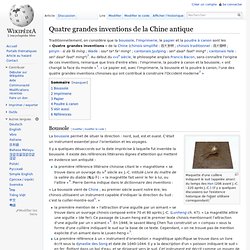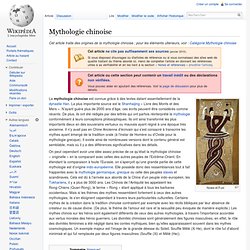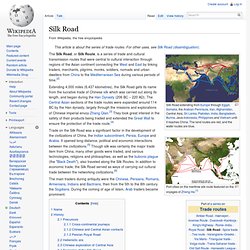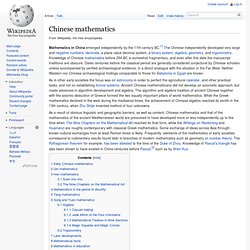

Zheng He. Carte Kangnido. Monnaies Chinoise. Mythologie chinoise. Catégorie:Ville de Chine ancienne. Liste des textes de la Chine antique. Quatre beautés de la Chine antique. Un article de Wikipédia, l'encyclopédie libre.

A noter que parfois, Diaochan est remplacée par Consort Yu[réf. nécessaire]. Quatre grandes inventions de la Chine antique. Un article de Wikipédia, l'encyclopédie libre.

Boussole[modifier | modifier le code] Maquette d'une cuillère indiquant le sud (appelée sinan) du temps des Han (206 avant J. -C. - 220 après J. -C.) (Il y a quelques discussions sur l'existence historique de l'objet utilitaire correspondant)[3] La boussole permet de situer la direction : nord, sud, est et ouest. Il y a quelques désaccords sur la date imprécise à laquelle fut inventée la boussole. La première référence littéraire chinoise citant le « magnétisme » se trouve dans un ouvrage du IVe siècle av. . « La boussole vient de Chine ; au premier siècle avant notre ère, les chinois utilisaient un instrument capable d'indiquer la direction du Sud : c'est la cuiller-montre-sud[5]. » la première mention de « l'attraction d'une aiguille par un aimant » se trouve dans un ouvrage chinois composé entre 70 et 80 après J.
La civilisation chinoise. Étudier sans réfléchir ne sert à rien.

Réfléchir sans étudier est périlleux. Celui qui pense à être humain ne commet pas de fautes. Celui qui comprend son devoir et ne le remplit pas est un lâche. Le sage voit l'ensemble, non le détail. Le vulgaire compare et ne généralise pas. Le sage voit son devoir. Le sage attend tout de lui-même. Être humain, c'est aimer les hommes. Le sage respecte tout. Il faut d'abord faire ce qui nous coûte, Ensuite ce qui nous plaît. Mythologie chinoise. Un article de Wikipédia, l'encyclopédie libre.

Cet article traite des origines de la mythologie chinoise ; pour les éléments ultérieurs, voir : Catégorie:Mythologie chinoise Nuwa et Fuxi La mythologie chinoise est connue grâce à des textes datant essentiellement de la dynastie Han. La plus importante source est le Shanhaijing « Livre des Monts et des Mers ». N’ayant guère plus de 2000 ans d’âge, ces écrits peuvent être considérés comme récents. On peut cependant avoir une idée assez précise de ce qu’était la mythologie chinoise « originelle » en la comparant avec celles des autres peuples de l’Extrême-Orient. Mythes exclusivement chinois[modifier | modifier le code] Xie était l’ancêtre des Shang et sa mère s’appelait Jiandi. Il importe de signaler qu'aucun de ces mythes ne possède le moindre équivalent dans la mythologie indo-européenne.
Mythes partagés avec le monde indo-européen[modifier | modifier le code] La création du monde[modifier | modifier le code] Voir article détaillé Houyi. The Silk Road. On the eastern and western sides of the continent, the civilisations of China and the West developed.

The western end of the trade route appears to have developed earlier than the eastern end, principally because of the development of the the empires in the west, and the easier terrain of Persia and Syria. The Iranian empire of Persia was in control of a large area of the Middle East, extending as far as the Indian Kingdoms to the east. Trade between these two neighbours was already starting to influence the cultures of these regions. Silk Road. Silk Road extending from Europe through Egypt, Somalia, the Arabian Peninsula, Iran, Afghanistan, Central Asia, Sri Lanka, Pakistan, India, Bangladesh, Burma, Java-Indonesia, Philippines and Vietnam until it reaches China.

The land routes are red, and the water routes are blue. Port cities on the maritime silk route featured on the voyages of Zheng He.[1] The Silk Road, or Silk Route, is a series of trade and cultural transmission routes that were central to cultural interaction through regions of the Asian continent connecting the West and East by linking traders, merchants, pilgrims, monks, soldiers, nomads and urban dwellers from China to the Mediterranean Sea during various periods of time.[2] Extending 4,000 miles (6,437 kilometres), the Silk Road gets its name from the lucrative trade of Chinese silk which was carried out along its length, and began during the Han Dynasty (206 BC – 220 AD).
Name[edit] History[edit] Precursors[edit] Cross-continental journeys[edit] Hellenistic era[edit] Photo carte ancienne de Chine de Luis de Barbuda. Internet East Asian History Sourcebook. There is no way of avoiding the fact that China is the central culture of Eastern Asia. Massively larger than any of her neighbors, China may have developed its cultural forms in relative isolation, but since the advent of Buddhism has both absorbed outside influences and disseminated its own culture.
Japanese, Korean and Vietnamese cultures are not comprehensible without taking into account power of Chinese culture in art, literature and religion. Chinese culture itself is highly complex, and the other East Asian cultures also reflect local circumstances and traditions. For instance the (later) Chinese ideal of a scholar-gentleman contrasts strongly with Japanese warrior ideals. It is not going to far to suggest that the very different responses of the various East Asian to the Western intrusion of the past two centuries reflect the variety of previous historical developments.
See my Brooklyn College: Chinese Cultural Studies class page. General. Technique de la multiplication en Chine antique. Chinese mathematics. Mathematics in China emerged independently by the 11th century BC.[1] The Chinese independently developed very large and negative numbers, decimals, a place value decimal system, a binary system, algebra, geometry, and trigonometry.

Knowledge of Chinese mathematics before 254 BC is somewhat fragmentary, and even after this date the manuscript traditions are obscure. Dates centuries before the classical period are generally considered conjectural by Chinese scholars unless accompanied by verified archaeological evidence, in a direct analogue with the situation in the Far West.
Neither Western nor Chinese archaeological findings comparable to those for Babylonia or Egypt are known. As in other early societies the focus was on astronomy in order to perfect the agricultural calendar, and other practical tasks, and not on establishing formal systems. Ancient Chinese mathematicians did not develop an axiomatic approach, but made advances in algorithm development and algebra. The science of mathematics is looked at with such importance in. The science of mathematics is looked at with such importance in China that it is considered one of the six basic arts, along with ritual, music, archery, horsemanship and calligraphy (Yan, Du Shiran, 1987, p.22).

It is the importance that the Chinese place on mathematics that caused it to be one of the most influential cultures in the history of the world in terms of mathematical breakthroughs. Unfortunately for the Chinese, it is only recently that they are beginning to receive the credit they deserve for their achievements. Chinese overview. Version for printing Several factors led to the development of mathematics in China being, for a long period, independent of developments in other civilisations.

The geographical nature of the country meant that there were natural boundaries (mountains and seas) which isolated it. On the other hand, when the country was conquered by foreign invaders, they were assimilated into the Chinese culture rather than changing the culture to their own. As a consequence there was a continuous cultural development in China from around 1000 BC and it is fascinating to trace mathematical development within that culture. There are periods of rapid advance, periods when a certain level was maintained, and periods of decline. The first thing to understand about ancient Chinese mathematics is the way in which it differs from Greek mathematics. History of China. China. Chine ancienne.